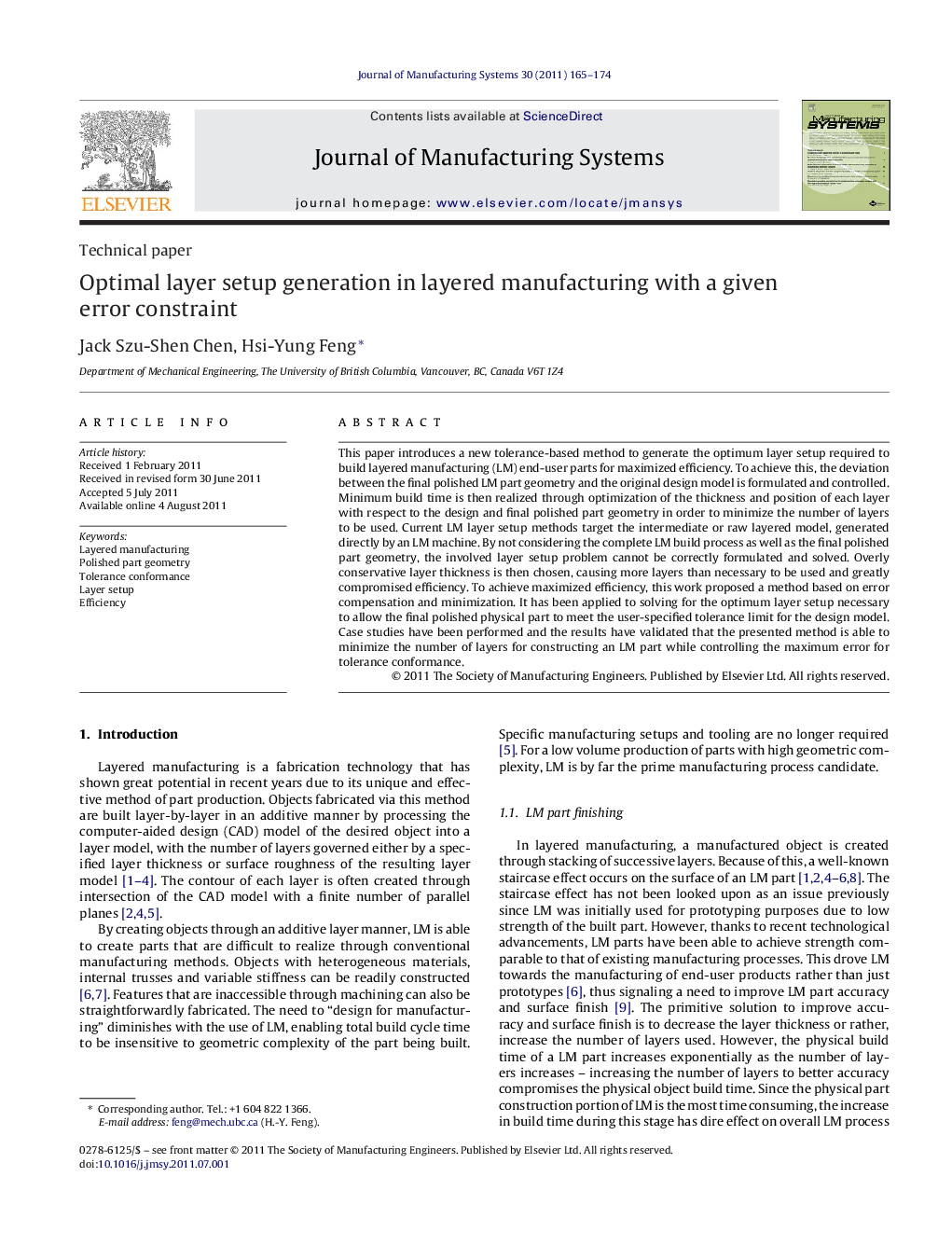| Article ID | Journal | Published Year | Pages | File Type |
|---|---|---|---|---|
| 1697751 | Journal of Manufacturing Systems | 2011 | 10 Pages |
Abstract
This paper introduces a new tolerance-based method to generate the optimum layer setup required to build layered manufacturing (LM) end-user parts for maximized efficiency. To achieve this, the deviation between the final polished LM part geometry and the original design model is formulated and controlled. Minimum build time is then realized through optimization of the thickness and position of each layer with respect to the design and final polished part geometry in order to minimize the number of layers to be used. Current LM layer setup methods target the intermediate or raw layered model, generated directly by an LM machine. By not considering the complete LM build process as well as the final polished part geometry, the involved layer setup problem cannot be correctly formulated and solved. Overly conservative layer thickness is then chosen, causing more layers than necessary to be used and greatly compromised efficiency. To achieve maximized efficiency, this work proposed a method based on error compensation and minimization. It has been applied to solving for the optimum layer setup necessary to allow the final polished physical part to meet the user-specified tolerance limit for the design model. Case studies have been performed and the results have validated that the presented method is able to minimize the number of layers for constructing an LM part while controlling the maximum error for tolerance conformance.
Keywords
Related Topics
Physical Sciences and Engineering
Engineering
Control and Systems Engineering
Authors
Jack Szu-Shen Chen, Hsi-Yung Feng,
